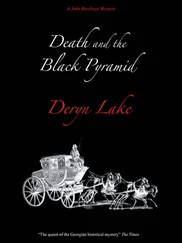Any writer who has leant as I did on the work of other people must stagger under an almost intolerable burden of gratitude. I acknowledge with pleasure and admiration my debt to all those whose publications I have made use of in this book. Two names, above all, I would like to single out: Professor Hamilton Thompson, whose pioneer work in this field has exercised so great an influence on the labours of all subsequent historians, and Dr Elizabeth Carpentier, whose wit and scholarship illuminated the subject in later years.
Philip Ziegler London, 1998
IT must have been at some time during 1346 that word first reached Europe of strange and tragic happenings far away in the East. Even in this age of easy travel and rapid spread of news, calamities in China tend to be accepted in the Occident with the polite but detached regret reserved for something infinitely remote. In the fourteenth century, Cathay was a never-never-land; unheard of except by the more sophisticated and, even to them, a place of mystery which only a few merchants had visited and about which little was known. No story, however horrific, would seem altogether implausible if it came from such a source; but equally no medieval savant or merchant would have conceived that what happened so far away could have any possible relevance to his own existence. The travellers’ tales were received with awed credulity but gave rise to no alarm.
Certainly things seemed to have gone badly wrong. An imposing series of disasters studded the history of the previous years. {1} 1 1 J. F. C. Hecker, The Epidemics of the Middle Ages, (Trad. B. G. Babington) London, 1859, p.11. Cf. Abbé des Guignes, Histoire des Huns, Paris, 1757.
In 1333 parching drought with consequential famine had ravaged the plains watered by the rivers Kiang and Hoai. Then had come floods in which four hundred thousand were said to have died, as a result of which, presumably, the mountain Tsincheou ‘fell in’, causing great chasms in the earth. In 1334 there was drought in Houkouang and Honan followed by swarms of locusts, famine and pestilence. An earthquake in the mountains of Ki-Ming-Chan formed a lake more than a hundred leagues in circumference. In Tche the dead were believed to number more than five million. Earthquakes and floods continued from 1337 to 1345; locusts had never been so destructive; there was ‘subterraneous thunder’ in Canton.
But these were mere curtain-raisers for the real calamity. Several contemporary accounts exist of the earliest days of the Black Death, so similar in detail as to suggest that they may well have come from the same source. Almost the only man known to have been at or near the spot, Ibn-Bātuta, ‘The Traveller’ is disappointingly reticent. {2} 2 2 Voyages de Ibn-Batoutah, Société Asiatique, Paris, 1853.
An anonymous Flemish cleric, on the other hand, was fortunately unfettered by the restrictions imposed on those who have actually seen what they describe. Basing himself on a letter from a friend in the papal curia at Avignon he recounted how: ‘in the East, hard by Greater India, in a certain province, horrors and unheard of tempests overwhelmed the whole province for the space of three days. On the first day there was a rain of frogs, serpents, lizards, scorpions, and many venomous beasts of that sort. On the second, thunder was heard, and lightning and sheets of fire fell upon the earth, mingled with hail stones of marvellous size; which slew almost all, from the greatest even to the least. On the third day there fell fire from heaven and stinking smoke, which slew all that were left of men and beasts, and burned up all the cities and towns in those parts. By these tempests the whole province was infected; and it is conjectured that, through the foul blast of wind that came from the South, the whole seashore and surrounding lands were infected, and are waxing more and more poisonous from day to day…’ {3} 3 3 De Smet, ‘Breve Chronicon clerici anonymi’, Recueil des Chroniquesde Flandres, Vol. III, p.14.
This concept of a corrupted atmosphere, visible in the form of mist or smoke, drifting across the world and overwhelming all whom it encountered, was one of the main assumptions on which the physicians of the Middle Ages based their efforts to check the plague. For one chronicler the substance of the cloud was more steam than smoke. {4} 4 4 Storie Pistoresi, Muratori 11, V. p.237.
Its origin was to be found in a war which had taken place between the sea and the sun in the Indian Ocean. The waters of the ocean were drawn up as a vapour so corrupted by the multitude of dead and rotting fish that the sun was quite unable to consume it nor could it fall again as healthy rain. So it drifted away, an evil, noxious mist, contaminating all it touched. For the Chronicler of Este, however, this cloud of death owed nothing to the sea:
Between Cathay and Persia there rained a vast rain of fire; falling in flakes like snow and burning up mountains and plains and other lands, with men and women; and then arose vast masses of smoke; and whosoever beheld this died within the space of half a day; and likewise any man or woman who looked upon those who had seen this… {5} 5 5 Chronicon Estense, Muratori 15, III, p.160.
By the end of 1346, therefore, it was widely known, at least in the major European seaports, that a plague of unparalleled fury was raging in the East. Fearful rumours were heard of the disease’s progress: ‘India was depopulated, Tartary, Mesopotamia, Syria, Armenia were covered with dead bodies; the Kurds fled in vain to the mountains. In Caramania and Caesarea none were left alive…’ {6} 6 6 Hecker, op. cit., p.21.
But still it does not seem to have occurred to anyone that the plague might one day strike at Europe.
The most circumstantial account of how the disease made this fatal leap comes from Gabriel de Mussis. At one time, indeed, it was thought that the writer had himself visited Asia Minor and had been a passenger on the ship which carried the plague to Europe. {7} 7 7 Haeser, Archiv für die gesamte Medizin, Jena, Vol. II, p.29.
A subsequent editor, however, has reluctantly but decisively established that de Mussis, during the critical period, never stirred from his native town of Piacenza. {8} 8 8 A. G. Tononi, ‘La Peste dell’ Anno 1348’, Giornale Ligustico, Genoa, Vol X, 1883, p.139.
De Mussis stated that the plague settled in the Tartar lands of Asia Minor in 1346. According to Vernadsky it left eighty-five thousand dead in the Crimea alone. {9} 9 9 G. Vernadsky, The Mongols and Russia, Yale, 1959.
Whether coincidentally or because they made the conventional medieval assumption that some human agency, preferably in the form of an already unpopular minority group, must be responsible for their sufferings, the Tartars decided to attack the Christian merchants in the vicinity. A street brawl, in which one of the locals was killed, seems to have provided the excuse for what was probably a premeditated campaign. The Tartars set on a Genoese trading station in the city of Tana and chased the merchants to their redoubt at Caffa, now Feodosia, a town on the Crimean coast which the Genoese had built and fortified as a base from which to trade with the Eastern hinterland. The Tartar army settled down outside the walls and prepared to bombard the city into submission. {10} 10 10 Haeser, op. cit., Vol. II, pp.48–9.
Their plans were disastrously disturbed by the plague which was soon taking heavy toll of the besiegers. ‘Fatigued, stupefied and amazed’, they decided to call off the operation. First, however, they felt it was only fair that the Christians should be given a taste of the agony which the investing force had been suffering. They used their giant catapults to lob over the walls the corpses of the victims in the hope that this would spread the disease within the city. As fast as the rotting bodies arrived in their midst the Genoese carried them through the town and dropped them in the sea. But few places are so vulnerable to disease as a besieged city and it was not long before the plague was as active within the city as without. Such inhabitants as did not rapidly succumb realized that, even if they survived the plague, they would be far too few to resist a fresh Tartar onslaught. They took to their galleys and fled from the Black Sea towards the Mediterranean. With them travelled the plague.
Читать дальше












